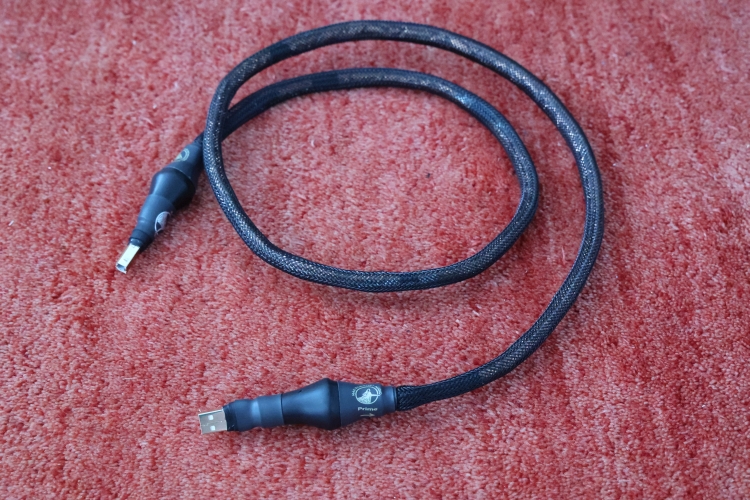
Review sample supplied by Mad Scientist Audio
Retail price in US Dollars at the time of review:
1 meter $1.599 (+VAT)
1.2 meter $1.849 (+VAT) (as reviewed)
1.5 meter $2.099 (+VAT)
2 meter $2.399 (+VAT)
“Yet another USB cable review…” is what some of you, dear readers, may think. Haven’t we heard all the possible variants by now? One would think so, for sure. And I agree that this category is reaching a saturation point. Meanwhile, new products keep being developed. But the question is, does this new product truly make a unique proposition, or have we heard it before?
The above sentiment may also apply to products made by Mad Scientist Audio. I realize that I have reviewed many of their products and often pronounced new incarnations better than the last. Surely, there must be a culmination point somewhere? Well, the thing is, as product design goes, a designer learns lessons as they go along, leading to better and better products. Sometimes, they’re just different, but that can also be good, depending on the use case. In this case, however, the development has reached a vital culmination point. Let me copy some text from the manufacturer’s website to lead into this.
Before USB, there was Coaxial (S/PDIF) digital. This suffers from the technical problem that the clock must be recovered from the data stream, a technique that produces more jitter than desirable. Then came asynchronous USB, where the DAC controls the data rate, so a high-quality, low-jitter clock can be used in the DAC. This was technically a better solution, and it should sound perfect.
But it didn’t.
In fact, it sounded worse than using a Coaxial cable connection. Some blamed noise on the 5V line. Others blamed noise on the ground line. Various techniques were used (in an effort to offset the sound degradation), in the form of add-on boxes and dongles; galvanic isolation, regeneration, and noise filtering. These often gave some improvement but at a high cost; they also often left their own footprints on the music.
So, in 2018, we designed the original Black Magic USB cable.
We found the real problem is not noise on the ground or 5V lines—it’s noise that piggybacks on the data itself. Black Magic uses innovative techniques to reduce and absorb this noise, as well as special measures to prevent its radiation from the cable.
In 2022, we revised the whole cable, producing the USB ULTRA cable. This performs at an entirely new level from the original.
In 2023, we pulled out all the stops and produced the USB GOLD version. This uses selected silver/gold wire and a different kind of mechanical damping.
And in 2024, we have a new design: Prime – our best yet.
About Prime USB
The new cable is called Prime not just because it is the company’s best cable but mainly because it uses prime numbers to define the sizes and positions of various elements to create a non-resonant “bad antenna” design that reduces noise and interference. Primes do not divide into each other, and this also infers they don’t resonate with each other, which is a desirable quality in a cable. Why a “bad antenna”? In general, an antenna transmits and receives RF energy. So, a bad antenna theoretically minimizes the amount of energy (i.e., noise) that is transmitted and picked up by the cable. The Prime USB also uses a special “Keg” at each end to further reduce noise. These Kegs are different from the ones used on the speaker cables and power cords and have been reformulated specially for the Prime design. These use some exotic materials first used in the company’s Magic Tubes.
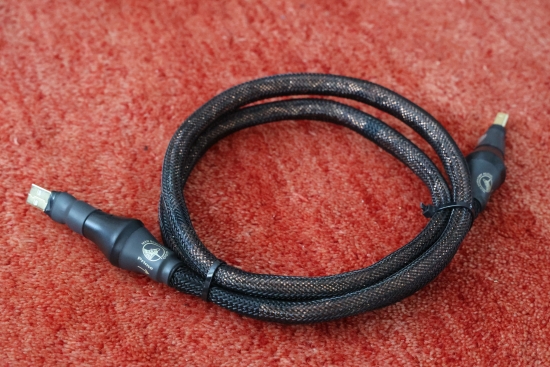
Above: This is how the cable arrives: rolled up tightly. It may be a stiff cable, but it can be bent into any shape.
Prime USB uses the same Silver/Gold wire as the Gold cables use and builds on several of the lessons learned during 7 years of USB cable development.
By design, the Prime USB Cable is quite stiff, even more so at the source end than at the destination end. Two features are engineered into the design to make it easier to use. First, a flexible section near each end lets you quickly get the correct angle on the cable when plugging in. Second, the ends of the cables (the kegs and plugs) twist around about half a turn to allow you to get the correct orientation on plugs that need it. To connect the cable, first bend the main body to roughly the right shape. Don’t be afraid to bend, even though it is stiff. You won’t break it. Once you have roughly the right shape, bend and twist the ends to fit.
The manufacturer indicates that the cables will sound great “out of the box” but will improve over the next 200 hours of use. Of course, I listened to them fresh out of the box, as well as after 2 weeks of use.
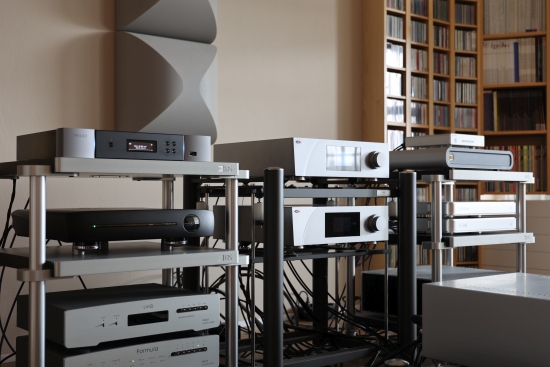
Review Context
The Prime USB will be listened to in the main system using the Precision C1.2 DAC and the Antipodes Oladra server running MinimServer and MPD Player. The rest of the system comprises the CH Precision L1 preamplifier, CH Precision A1.5 power amp, and Magico S1 MkII speakers.
Foreword
For the last few years, USB was not a main connection method for me, and regular readers will know why. In a nutshell, the quality of any USB connection hinges very heavily on the implementation of the interfaces on both ends (the server and the DAC), as well as the synergy between them. As such, it is easier to obtain a non-ideal connection than a happy marriage. Up until not too long ago, my preferred interface format was AES/EBU for its much more predictable results. So, what changed?
To explain, please allow a small detour.
I’ve mentioned it before: compared to UPnP, Squeeze, and MPD, Roon has a deviating sound. Full-bodied, smooth, and rich in tonality, but not quite as crisp, pure, and direct compared to the aforementioned alternative formats. The Grimm MU1 music server offered an unusually neutral and direct sound when I first got it. In fact, it sounded almost as crisp as the Aqua LinQ network interface with UPnP. Notably, both products offer only AES/EBU outputs, which further cemented my use of the format. In retrospect, I think the MU1’s hardware compensated for the Roon characteristics, but after a couple of updates that improved the server’s transparency and resolution, Roon’s true nature started shining through.
In addition, over the years, my preferences have subtly shifted toward an ever purer and more transparent delivery. Increasingly, I don’t like added warmth or thickness, and I especially do not like smear. To me, such attributes are the main giveaways to spoil the illusion of a real, live performance. I should note that Roon can sound great when the system has enough margin, and I’ve heard it sound great in some systems. For my system, acoustics, and personal preferences, however, Roon is a little too polite. This, combined with the ongoing wavering of sound quality with each Roon update, made me step away from the format, at least for the time being.
Now that Roon is owned by Samsung, the product may evolve in unexpected ways. But for now, because the MU1 only runs Roon, I set it aside and started looking elsewhere, and this led me back to the Antipodes Oladra.
Roon’s sonic properties are evident with every server, the Antipodes included. It’s actually even more pronounced with this server, as its innate sweetness accentuates Roon’s smoothness. But the beauty of the Antipodes server is that it offers a wide range of server/player solutions. My current preferred mode is MinimServer (UPnP) with MPD as the player and using the excellent JPLAY iOS control app. I can’t say enough nice things about this app. If you’re a fan of the Roon interface but not its sound quality, JPLAY is the perfect solution. It provides a significant portion of the niceties previously only available in Roon, and with that, my last hurdle was taken away.
Until very recently, the Oladra sounded musically most appealing when using its Reclocker outputs, and USB was quite mechanical in comparison. However, the last G4 update has massively improved the USB output to the point that I now prefer it over AES/EBU. The Reclocker outputs still offer a lusher and warmer presentation, but USB counters with a crisper, tighter, and more transparent delivery that is more in line with my current preferences. Moreover, in its latest incarnation, the server’s USB connection can also sound convincingly organic… given the right cable.
And this brings us back to the present and the product currently under review.
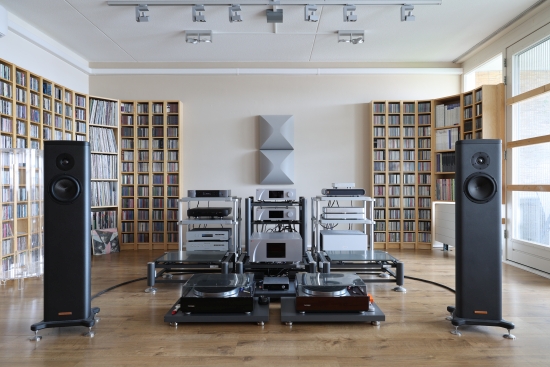
Listening
As mentioned in the foreword, the USB format can sound strict or mechanical compared to a traditional digital connection, and a Mad Scientist USB cable is a great way to remedy this. One of the attractive qualities of Mad Scientist USB cables is that they have an innate organic nature, and they always perform in a musically appealing manner. This has been true for all Mad Scientist USB cable models I have heard. So, if you’re looking for enhanced smoothness, tonal saturation, and flow, any Mad Scientist USB cable will deliver in those regards, although not all in equal measures.
The aspects that improved with each successive updated cable model are the more technical areas, such as precision and transparency. This held true up to the Black Magic Ultra, which was the brand’s best cable before the Black Magic Gold was introduced. The Gold version was different, gentler, subtler, and more refined, even than the regular Black Magic, but I felt it did not sound quite as grippy and expressive. Nevertheless, it is a great candidate for those looking predominantly to inject finesse and subtlety into their systems.
Now, there’s the Prime USB. One has to wonder: would it be more like the Black Magic Ultra or the Black Magic Gold? As it turns out, it takes a new route! But don’t worry, the new cable does not abandon the Mad Scientist virtues, rather, it takes both cables’ strongest assets and further improves on them. And the improvement is not subtle at all!
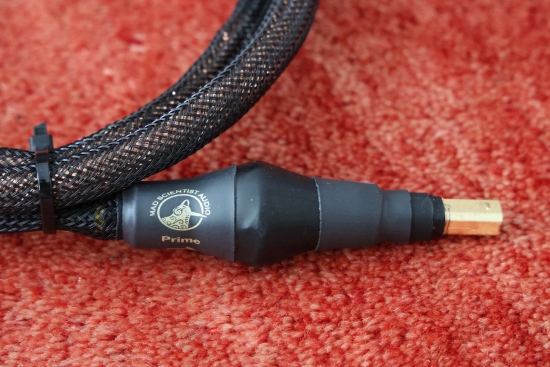
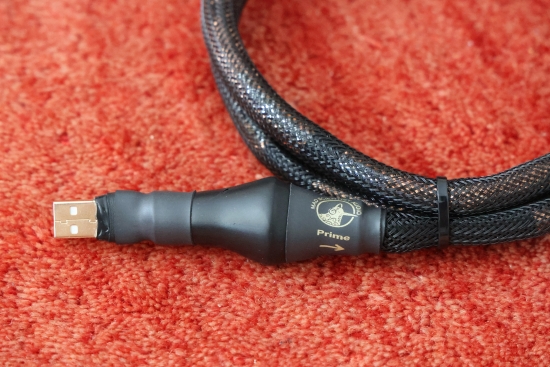
Freshly delivered and cold from the box, the Prime USB impresses right away with fantastic articulation, crispness, and dynamic attack. Notably, it achieves these feats without taking on a lean or desaturated nature—rather, it is the inverse! The Prime USB sounds remarkably solid and earthy, with deep tonal saturation and very realistic timbre. It is full-bodied and quite the opposite of lean, and yet, it is nimbler, livelier, more expressive, and faster-paced than any of the preceding models.
When compared with the well-run Black Magic Ultra, the freshly unpacked Prime USB impressed with its articulation and transient behavior. However, it was comparatively a little dry, and decays appeared reduced compared to the Black Magic Ultra. Even in this unfair comparison, I could already hear that the new cable would make life challenging on the Black Magic Ultra.
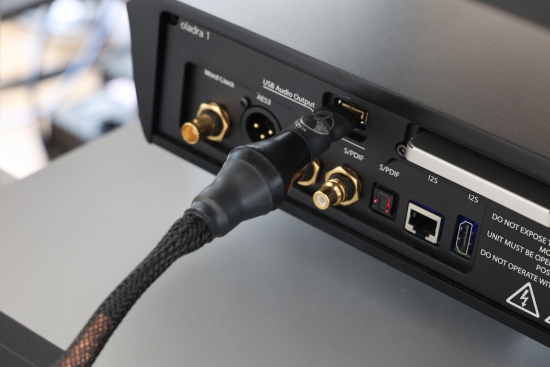
After giving the cable 200 hours of playing time, the described virtues remained intact, but the dryness was much reduced, replaced with a more effortless and natural flow.
Interestingly, the Prime USB’s excellence “resets” the expectation, making me assess the Black Magic differently. Whereas I felt that cable was very neutral before, I now think it is comparatively smoothed, filtered, and even a little blurry. This is rather impressive because this cable sounded quite a bit more resolute and precise than the model before it. The Ultra still sounds pleasant, and its extra fluidity can be seductive, but once you’re used to listening with the Prime, it’s hard to go back. The new cable is much more concrete and exciting and sounds more convincingly lifelike. It’s especially easy to hear with piano notes that are utterly convincing with the Prime USB: percussive, tangible, wooden, and reverberant, whereas the same passages sound softer and smoother with the Black Magic Ultra.
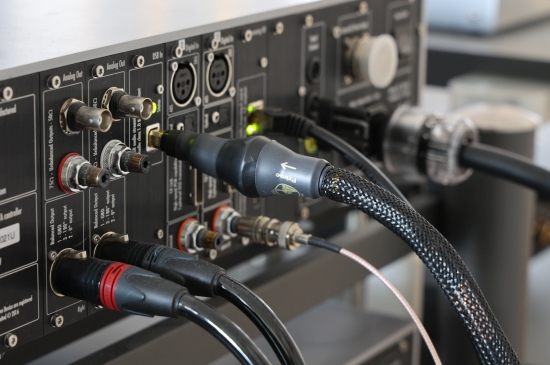
Up until not too long ago, the Final Touch Audio Sinope was my favorite USB cable. It shared certain sonic traits with the Mad Scientist Prime USB, most notably its earthy and sonorous character. But the Sinope was tilted heavily in this direction, leaving other areas less well developed. For instance, it sounded a little rough and dry. Nevertheless, with the less-than-ideal acoustics of my listening area at that time (a loss of impact and drive), the cable was precisely what the system needed. However, after addressing the acoustical issues, I felt it deviated too much from neutrality.
Now, the Mad Scientist Prime USB offers similar traits but in a much more balanced manner. It is robust and full-bodied but also fast and nimble, open, and highly resolving. Between the two, the Prime USB is not just a better match for my system but also a better-balanced and more neutral cable.
AES/USB/UPnP
These results could trigger a few valid questions. Is the Prime USB the best USB cable I heard so far? Does its perceived enhanced realism truly represent the most neutral and faithful delivery? Or are its particular attributes predominantly a better match with my components? Are natural and neutral mutually exclusive?
These are all reasonable questions. To be fair, any cable is probably going to compromise in some way, and every room and system responds differently, not to mention what’s probably the largest variable of all: our own interpretations. Further, what exactly is a perfect cable or a perfect rendition?
“Perfect” would be a 100% identical replay of the original performance, complete with the live acoustic. I think it’s safe to say this will probably forever remain unachievable. I have always maintained that because everything is an approximation, we should aim to find the ideal balance for a given system in a given acoustic. Today, I still stand by this. But in this case, I can shed more light on the matter.
Given that the Antipodes Oladra and CH C1.2 can be connected via UPnP, traditional digital connections, and USB, this setup allows direct comparisons under identical circumstances. Further, if we assume that a direct stream via UPnP constitutes the ideal, we could assess the faithfulness of a USB cable by how close it gets to the sound of the UPnP connection. Of course, this still includes certain variables, not to mention that any interface has its signature. Nevertheless, I conducted the comparisons and let the results speak for themselves.
As mentioned, the last Oladra G4 update has massively improved the USB output to the point where I now prefer it over AES/EBU. With Jorma or Mogami cables, the Reclocker outputs offer a still lusher and warmer presentation, but USB has a crisper, tighter, and more transparent delivery. Depending on the USB cable, USB can still sound less organic and free-flowing. However, these are precisely the areas in which Mad Scientist products typically excel, and the Prime USB is no exception. Particularly with the new cable, USB now sounds much better than AES/EBU, not just in terms of robustness, transient behavior, and expression but also in realism. When it comes to UPnP, its strongest assets, for me, are natural fluidity and flow. This remains true even when using standard (but carefully selected) Cat6 cables, which I prefer to use. When comparing this connection to the other two, it is striking how much USB now sounds like UPnP. Both are articulate, nimble, and engagingly expressive. The remaining difference is that UPnP sounds slightly leaner and purer, or one could also say that the Prime USB sounds slightly more robust, saturated, and accentuated. In any case, AES/EBU is now the odd one out, sounding considerably warmer, more mellow, and less exciting than either USB or UPnP.
Other sources
Although the Oladra is my main source and I used it predominantly for this review, I’ve also listened to the Prime USB with the Melco N50-S38 and CAT XACT S1 UPnP servers. No matter the source, the cable works consistently well. The three servers are sound quite different, meaning that the cable should work well across a wide range of components and setups.
Conclusion
Through iterative improvements leading to ever-increasing performance for each successive cable model, the Mad Scientist has achieved a breakthrough with the Prime USB. All Mad Scientist cables have an innate musical “rightness”, but the Prime is the brand’s first USB cable that combines traditional Mad Scientist traits such as body, tonal saturation, and natural flow with superb dynamics, fast and precise transient behavior, and excellent clarity.
The Prime USB cable’s virtues are balanced beautifully, leading to a performance that is thoroughly involving, expressive, and lifelike. I wondered what yet another USB cable could possibly bring, but I have to hand it to the Mad Scientist, for he has once again delivered!

External Links
Manufacturer: madscientist-audio
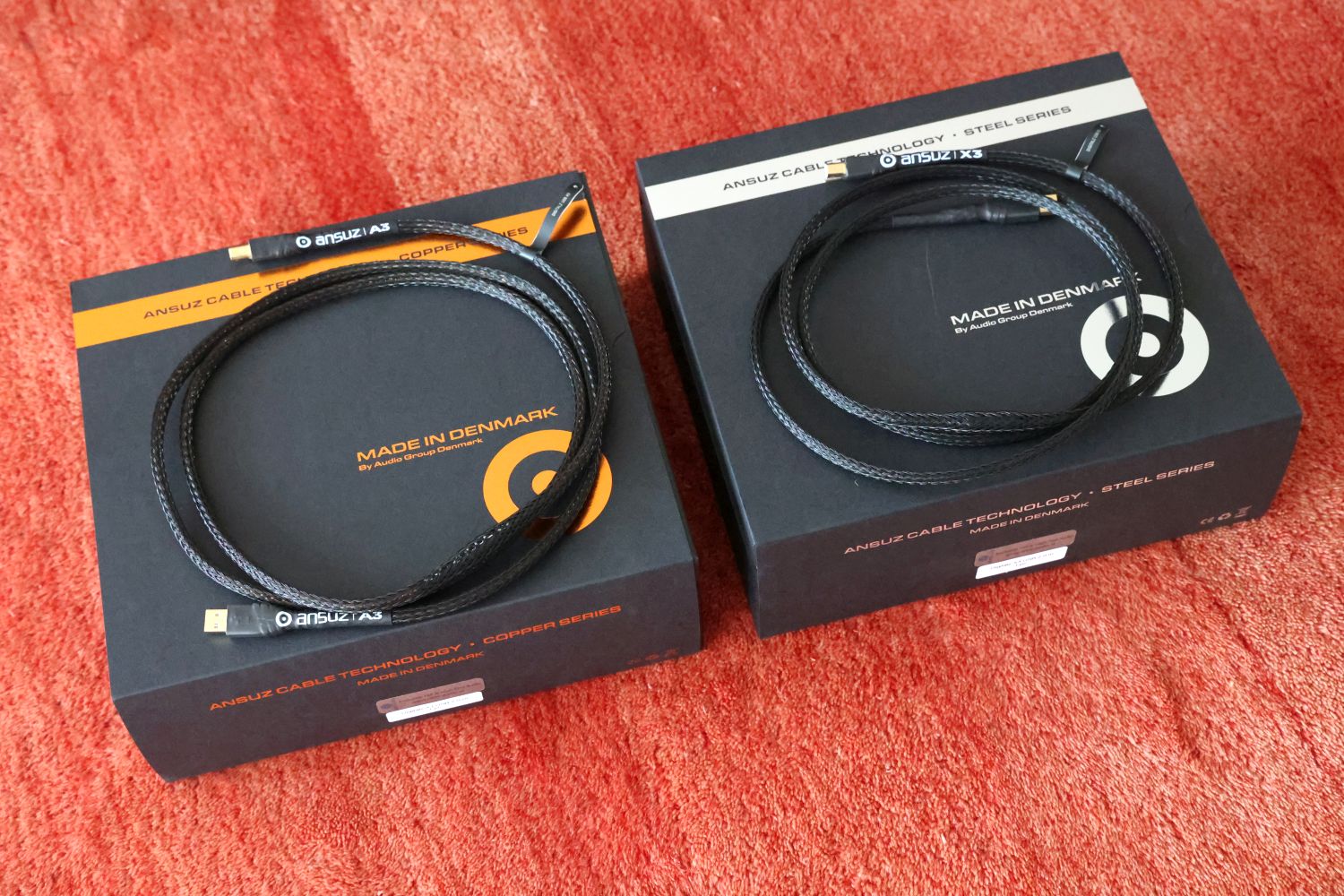
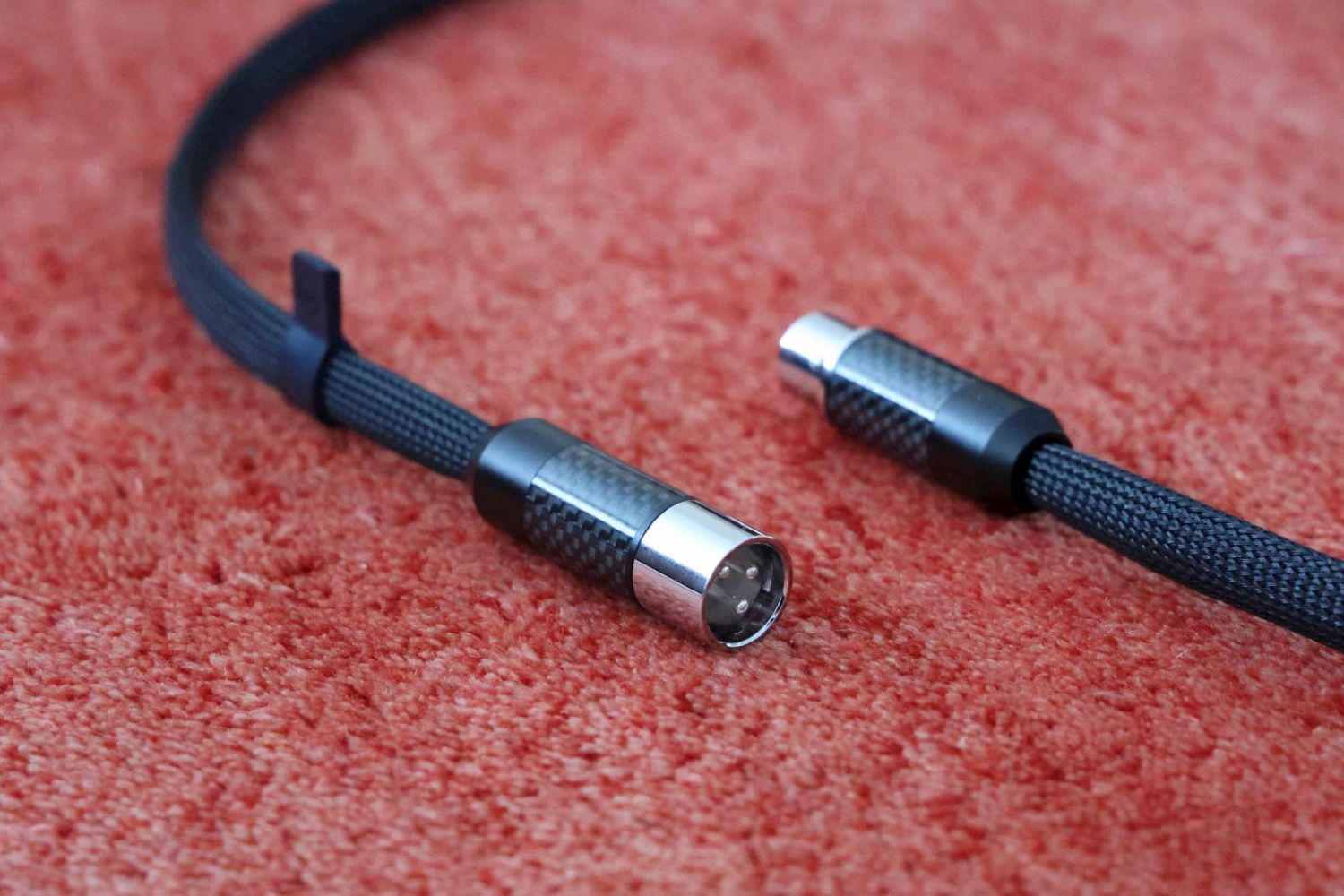
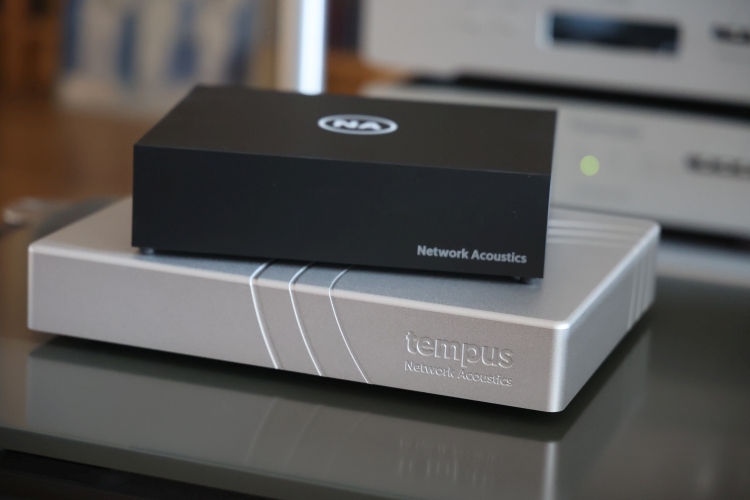

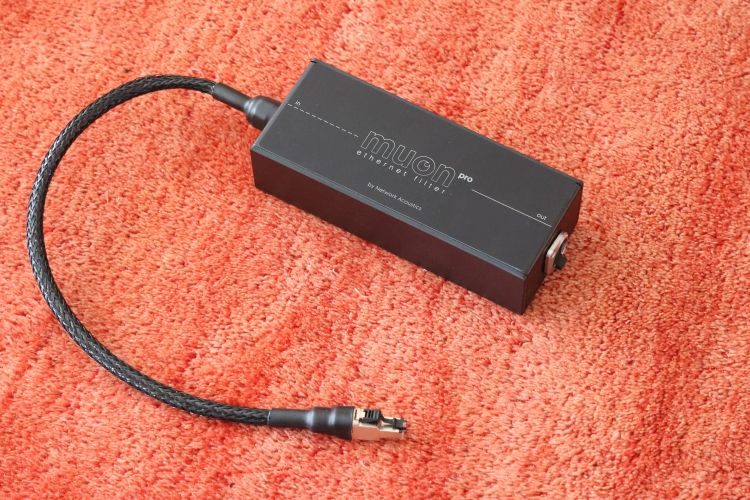
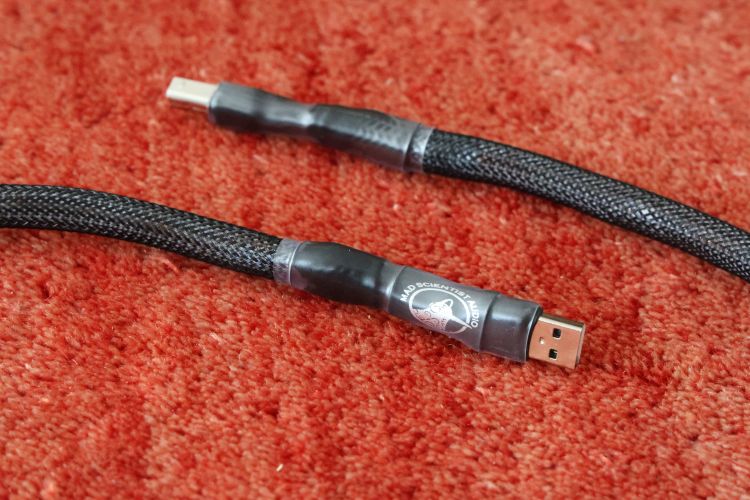
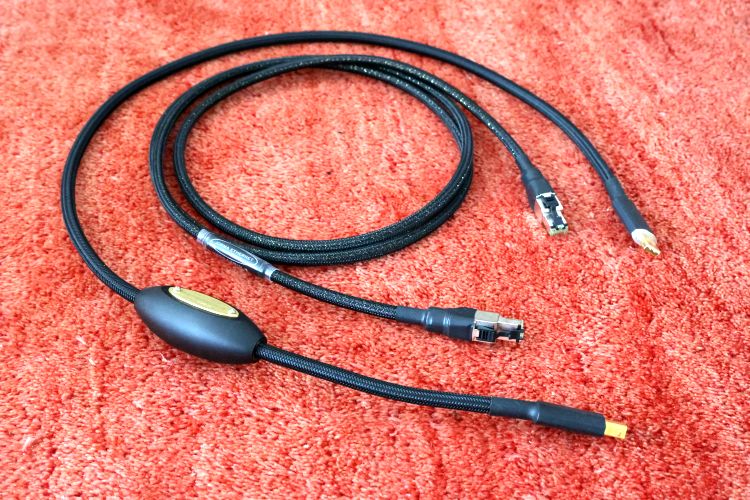
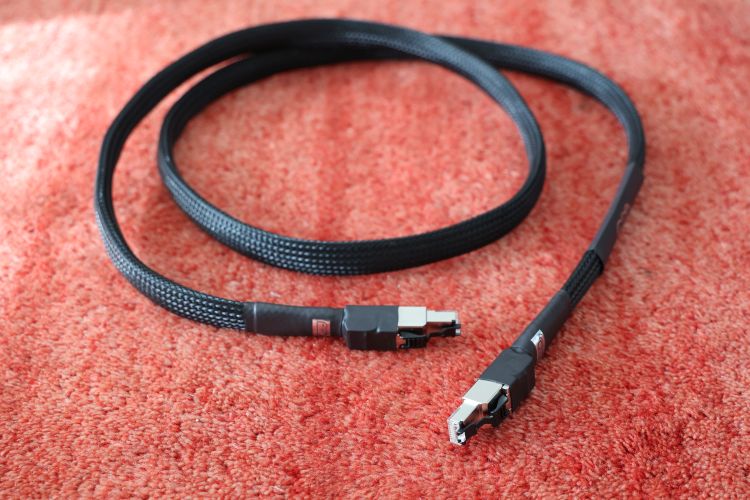
How does this compare to the Mad Scientist Black Magic Gold USB?
This is explained in the first few paragraphs of the “Listening” section of the review:-).
It didn’t read as obviously to me. You compare it to the Ultra, but not so much the Gold to which you just say it takes a new route. Is the Gold warmer sounding? That’s all I want to know. I am trying one out now and like it for the fullness and the non fatiguing highs. However, I find that there is some sibilance on vocals – the “ssss” at the end of notes perhaps due to the silver gold composition. Does the Prime have this issue? Or perhaps does the Ultra because of its copper composition not exhibit this? Thanks
The Gold is indeed warmer/smoother/more refined/more relaxed sounding than the Ultra, which in turn is more relaxed and rounder than the USB Prime. In other words: the Prime is the most concrete, direct, and expressive cable of the range. But it remains a Mad Scientist cable and it still sounds full and is not lean or cool. If your aim is to combat sibilance, the Ultra may be a good option. I also do not hear sibilance, edge, or etch with the Prime. On the other hand, the Prime is more revealing than the other two cables and less forgiving for whatever is in the source than the Ultra and the Gold.
Thanks for clarifying. So the Ultra even though it is less warm than the Gold, did not have any sibilance? Did you also experience sibilance with the Gold as I did even though it is warmer? Just to emphasise, I like the fullness of the Gold and the highs especially on brass instruments in Jazz. The sibilance is basically just on vocals.
I did write “warmer” below, but it’s more a sense of richness. Not actual warmth per se. Have you read my original review of the Gold and Ultra? If not, please do, as I have conducted these comparisons and described the results in-depth.
FWIW, I do not hear any sibilance in my system with either of these cables. So, it is possible you may need to look elsewhere in the system to fully address it. But if you want to pick one of the Mad Scientist USB cables, I’d say the Ultra is most forgiving of the three, and probably the best cable to address sibilance.
Interesting, what about the decreased decay at the beginning? Did it completely disappear after burn in? I like natural decays.
Good point, as I don’t think I made that clear enough. Indeed, the sense of dryness and reduced decay vanished with prolonged use. It’s still not a super-airy or super-fluid cable, but those that are, also sound softer and less precise.
Hi ,
All you have to do now is test the USB cable (Red) from the Canadian manufacturer LunaCables !
Hi, Thank you for describing the sound characteristics of roon. I am running Euphony OS using roon or the built in Stylus. The differences in SQ are like you are describing them, roon beeing “muddy”. Interestingly, nobody believes me.
I am also a fan of mad scientist cables, thanks to your reviews.
I and many others believe you Ulrich, because we hear the same thing. But if you post these experiences on places such as Roon’s forum regarding sound differences between Roon and other softwares all the “bits are bits” flat-earthers will combat you endlessly for fear that the world they live in is not as they understand it.
any comparasion with Signal projects for example Atlantis or Andromeda which sounds very similar to your review of your most favorite cable?
I’ve not heard any of the Signal Projects USB cables.
Hello Christian ,
I bought my first mad scientist usb from you.
made an upgrade to the ultra .was wondering wich one’s your favorite this Prime or the Muon 2?
Hi Ernesto, the Mad Scientist Prime USB is a USB cable, whereas the Network Acoustics muon 2 is an AES/EBU cable. As such, you can’t directly compare them, as different servers and DACs present more synergistic or less ideal marriages with either format. Moreover, they have very different characters. The Prime is the cable of choice for its super-robust, solid, and powerful bass and lower midrange, with an earthy yet expressive nature. The muon 2 is the cable of choice for its agility, fluidity, refinement, and airiness, with a more lightfooted and ethereal nature.
Thank you Christiaan ,
There is also a Muon usb.
But after reading your reviews and reaction ,
This wasn’t in your materials you’ve tested .
Hi Ernesto, Indeed, I have not reviewed the muon USB cable.